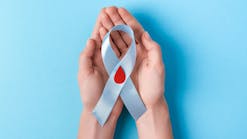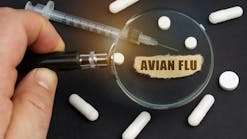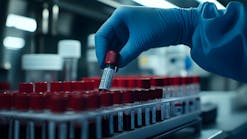Haiti occupies the western half of Hispaniola, the island where Columbus first landed, The nation, which gained independence in 1804, has had a history of political repression and cruel poverty. It has also been battered by horrendous natural disasters—most recently by the devastating earthquake of January 2010. But Haiti's history has also been shaped by the resilience of the Haitian people. Haitians are always looking towards the future, confident that their day will come.
International aid to Haiti has helped keep the dream of progress and prosperity alive. The Haiti National Lab is a prime example of how the small Caribbean nation is taking advantage of aid initiatives, from institutions such as the Centers for Disease Control and Prevention (CDC) and University of Massachusetts Medical School, to develop the infrastructure needed for a national, certified, world-class laboratory network.
Headed by Dr. Jacques Boncy, the Haiti National Lab has its eyes set on ISO 9001 certification, the international standard for quality management., In recent years, the Lab has placed increasing focus on training related to reinforcing quality control that translates into accurate results. Since 2002, it has received support from the CDC to develop an external quality assurance program and establish itself as a major site for laboratory training curriculum development. In a country with the highest per capita tuberculosis burden in Latin America and the Caribbean, the National Lab processes a high volume of interferon-gamma release assays (IGRAs), a blood test that measures how the immune system reacts to the bacteria that cause tuberculosis. Obtaining accurate laboratory data is therefore of paramount importance for public health management in Haiti.
An unlikely encounter
Don Traczyk, a Minnesota-based consultant for the National Lab, first heard about Artel, a Maine-based company that has emerged as a leader in liquid handling quality assurance, when he was enlisted to get the Artel PCS (Pipette Calibration System) purchased by the Lab set up and validated for its use.
Traczyk had first become involved with Haiti's laboratory community in 2000 when, at the behest of Sister Marie Vittetoe, the director of a private lab in Haiti, he began visiting the country and providing her lab with blood chemistry instruments, reagents and consumables, and training support. Seven years later, Traczyk took a job as a consultant for the National Lab and found himself coming face-to-face with an instrument that could play a key role in helping the Lab achieve its certification goal.
The Artel PCS ensures that a pipette is performing properly, so that it will deliver accurate test results. It does this by automatically measuring and documenting the accuracy and precision of the pipette's dispensed volumes. Beyond its portability and robustness, the PCS features user-friendly operations that also make it an ideal training tool for developing proper pipetting technique. Realizing the potential of the PCS, Traczyk headed to Maine to participate in Artel's Pipette Quality Management Certification training. He returned to Haiti in 2009, installed a PCS in the National Lab, and began using it to train lab technicians.
“Our goal since 2007 has been to help the National Lab achieve self-sufficiency,” says Traczyk. “There are a lot of people working hard to make sure that happens. We're going in the right direction, and training initiatives are playing a major role in staying the course.”
A network in the making
Headquartered in the Haitian capital of Port-au-Prince, the Haiti National Lab has countrywide network of ten regional labs that conduct independent tests ranging from standard blood chemistry to the HIV CD4 tests. The headquarters acts as the reference point for all regional network labs, providing the standards for a stable infrastructure.
“The leadership at the National Lab believes their institution should be held to the same high standards and expectations as labs in the U.S.,” adds Traczyk. “They understand the need for accurate results and the role that education plays in meeting those expectations.”
One of the first things Traczyk did was set up the PCS as a training tool to gauge the range of pipetting skill levels across the Lab. Traczyk and his colleague, Mary Nagel, used the PCS to demonstrate the importance of good pipetting technique.
Then, in January 2011, Traczyk and Nagel organized an Artel Pipetting Olympics to add an element of fun to the National Lab's continued commitment to improvement. The competition promotes strong pipetting technique and awards medals based on performance.
Having gained better control of the all-important issue of pipetting technique, the National Lab began making strides toward its goal of being able to calibrate and verify its pipettes onsite for the first time. According to Traczyk, this latest stride toward the National Lab's self-sufficiency should be in place by the end of this year.
Traczyk expects each department within the National Lab's headquarters will have one person responsible for calibration and verification. “A lot of our pipettes have been donated by organizations in other countries. We had no way of knowing what they were being used for before, how often they were calibrated or even how old they were,” says Traczyk. “We might still have a long road to traverse before we have all our ducks in a row for ISO 9001 certification, but resources like the PCS are getting us a little closer every day.”





